Iron is an essential mineral for your toddler’s brain health and overall growth, but some toddlers aren’t getting enough iron. How to help your little one get enough iron? Find out 7 ways to feed your child an iron-rich diet.
Iron is a super-important nutrient for toddlers – it’s an essential mineral for growth. Your toddler needs to get enough iron from foods for their body to function properly, and to avoid iron deficiency anemia.
How to help your little one get enough iron? We’ve got 7 ways to feed your child an iron-rich diet. But first, let’s go over why iron is so important, and how much iron your toddler needs each day.
Why is iron so important for toddlers?
Iron is essential for your toddler’s body to make red blood cells. Red blood cells are how the body takes oxygen from the lungs to the rest of the body.
Iron helps your toddler’s body make hemoglobin, the protein red blood cells need to take oxygen throughout the body, and myoglobin, a protein in muscles that helps the muscles get oxygen.
Iron is also needed for your toddler’s overall healthy growth and development. It’s especially vital for their brain and nervous system to develop. To send signals from the brain all over the body, and to react and respond to surroundings after the brain processes them, your toddler’s nerve cells need iron.
This means your toddler needs iron for:
- Learning
- Developing motor skills
- Social-emotional growth
- Language development
- Overall brain performance and functioning
What happens if your child doesn’t get enough iron?
If your toddler doesn’t get enough iron, they could have difficulty growing at a healthy rate. They could also have difficulty learning, and may develop behavioral issues.
Most importantly, your child needs to get enough iron to avoid iron deficiency anemia. If a toddler develops iron deficiency anemia, their immune system will get weaker and they may have trouble fighting off infections. They may also become fatigued and weak, have a lower attention span, have much less of an appetite, develop cold hands and feet, crave non-food items to eat, and have trouble gaining weight.
How much iron does your toddler need?
Toddlers (1-3 year olds) need at least 7 milligrams of iron per day.
Unfortunately, many toddlers aren’t getting enough iron. It's estimated that around 1 in 10 toddlers have iron deficiency anemia. And it can sometimes be hard to know if your child is getting enough iron, because most signs of low iron intake don’t show up until a child develops iron deficiency anemia.
The two types of iron
When making sure that your child gets enough iron, you’ll need to keep in mind that there are two types of iron. Your child needs both types for healthy growth, but one type is easier for your toddler’s body to absorb.
- Heme iron is the easier type for the body to absorb. It’s found in eggs, meats, and seafood.
- Non-heme iron is much harder for the body to absorb, but still important for your toddler. It’s found in plants like dark green veggies, legumes, and certain grains like oatmeal.
7 Ways To Feed Your Toddler More Iron
Now that we've gone over why iron is so important, here are our top 7 ways to make sure your toddler gets enough iron in their diet.
1. Opt for Oatmeal
Oatmeal is a great source of many nutrients, including non-heme iron for your toddler’s brain health. If you choose an iron-fortified oatmeal (one with extra iron added in), that’s even better.
There are also plenty of ways to use oatmeal to help feed your toddler a diverse, healthy diet, since it’s an awesome base for nearly all fruits and even some vegetables.
Ready. Set. Food! Organic Baby Oatmeal is iron-fortified, so it’s a great way to help your child get enough iron each day (and it's well-loved by toddlers).
Our Original Oatmeal contains 9 mg iron, and all other flavors contain 8 mg iron, meaning both supply even more iron than a toddler needs daily. All of the flavors also contain 9 top allergens, to help sustain your toddler’s exposure to these foods as part of a nutritious, diverse diet. Plus, they're all healthy choices with no added sugar.
Choose from several options with yummy flavors already mixed in, including Banana Apple, Sweet Potato Carrot, and Peanut Butter!
Or, opt for our Original Oatmeal and add the chopped fruits – or veggies – of your choice!
Here are some of our favorite fruit combos to mix in with our oatmeal:
- Blueberries and peaches
- Raspberries and kiwis
- Mangoes and strawberries
- Strawberries and bananas
- Pears and blueberries
- Peaches and mangoes
- Blueberries and strawberries
- Fruit rainbow: Strawberries, pineapple, peaches, kiwi, and blueberries
2. Get Creative With Meats And Fish
Meats, poultry, shellfish, and fish are great sources of heme iron – the iron that’s most easily absorbed. They’re also great protein sources.
There are plenty of ways to serve iron-rich meats and fish, and encourage your toddler to eat a variety of foods. Here are some of our favorite ideas:
- Fiesta bowls with ground turkey crumbles, beans, red pepper, avocado, quinoa, and corn
- Soy-ginger chicken quinoa bowl with butternut squash
- Chicken, sweet potato, and zucchini bowl with avocado and feta
- Chicken quesadillas with chopped kale and basil, on whole wheat tortillas
- Mashed beans and turkey in a whole-wheat wrap
- Beef, turkey, or chicken meatball crumbles with shredded carrots and zucchini inside
- Beef crumbles with cooked red and orange peppers, served with quinoa
- Low-mercury fish (bones removed) or low-mercury shellfish with a mango-peach salsa on top
- Herbed chicken with mashed potatoes and steamed veggies
- Ground beef with shredded carrots, celery, and cucumbers, cooked in no-sugar soy sauce
- Grilled Atlantic salmon with a veggie and a fruit of choice
If you serve your little one fish or shellfish, make sure it’s low in mercury for their safety. Atlantic salmon, shrimp, scallops, and haddock are great low-mercury choices that contain lots of iron.
3. Serve Egg-Cellent Eggs
Eggs are a nutritional powerhouse. They’re an excellent source of heme iron and protein, plus vitamins A and D. Plus, eggs are super versatile – you have plenty of ways to serve them to your little one. We love these options:
- Broccoli egg cups with chopped red bell pepper, spinach, and/or mushrooms
- Burritos with egg, peppers, tomatoes, and ground turkey
- Scrambled egg with cheese, chopped bell peppers, mushrooms, kale and/or spinach
Or, try out our top egg recipes for toddlers.
4. Pack In Iron Powerhouse Veggies
The best veggies for feeding your toddler iron are the dark greens – the leafy greens of spinach and kale, plus broccoli. Legumes – beans, chickpeas, and lentils – are awesome iron sources as well.
A great strategy is to serve these veggies with meat, fish, or eggs. That’s because these green veggies contain non-heme iron, while meats and fish contain heme iron. Eating heme iron and non-heme iron together helps your toddler’s body absorb the non-heme iron more effectively.
5. Get Familiar With Other Iron-Rich Foods
Besides the powerhouse iron foods we mentioned above, other iron-rich foods include:
- Watered-down smooth peanut butter
- Iron-enriched grain products, such as pasta and bread
- Figs
- Prune puree
- Pomegranates
- Watermelon
- Tofu and hummus (both come from legumes)
- Raisins (only safe if your toddler is over 18 months old; even once your toddler is old enough, you’ll want to soak the raisins in hot water to minimize the choking risk)
6. Pair Non-Heme Iron With Vitamin C
Another way to help your little one absorb non-heme iron is to pair non-heme iron foods with vitamin C-rich foods during the same meal. This is because vitamin C promotes iron absorption.
Some of the best vitamin C sources are citrus fruits (like oranges and grapefruits), strawberries, kiwis, bell peppers, and tomatoes.
Here are some of our favorite ways to pair iron-rich foods with foods high in vitamin C:
- Ready. Set. Food! Organic Baby Oatmeal with strawberry and kiwi
- Turkey and bean burrito (or burrito bowl) with tomatoes and red peppers
- Broccoli egg cups with chopped red bell pepper (plus another veggie if you choose)
- Burritos with egg, peppers, and tomatoes
- Scrambled egg with chopped bell peppers, broccoli, or kale
- Hummus with red peppers for dipping
Broccoli and kale are especially notable, as they contain both iron and vitamin C on their own. So, they contain iron and its “absorption helper” in one single package.
7. Be Careful With Milk
Although milk is important for your toddler's growth, it's just as vital to make sure your toddler isn't drinking too much milk.
Cow's milk is extremely low in iron, and your toddler's body won't absorb the iron inside. Plus, the high calcium levels in milk can make it difficult for your toddler to absorb iron from other sources, because calcium can block some iron absorption.
Plus, milk is filling. If your toddler fills up on too much milk, there's a risk that they won't be hungry enough to eat iron-rich foods.
How much milk should your toddler drink? Limit your toddler's milk intake to 2 cups per day if they're a year old, and don't give more than 2 ½ cups per day if they're 2-3 years old.
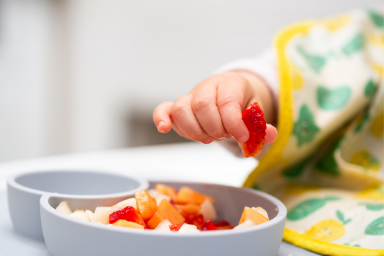
Best Finger Foods For Babies (And When To Start Finger Foods)
When to move beyond the spoon and start baby's journey with finger ...
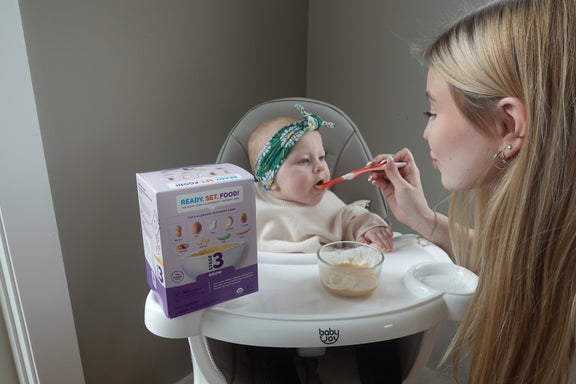
6 Reasons Why You Should Introduce Allergens
Landmark studies and medical guidelines recommend that you introduc...
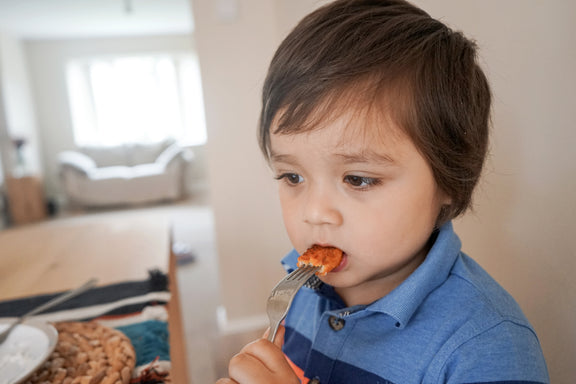
How To Know If My Toddler Is Getting Enough Protein?
Protein supports your toddler’s growth, helps build strong bones an...
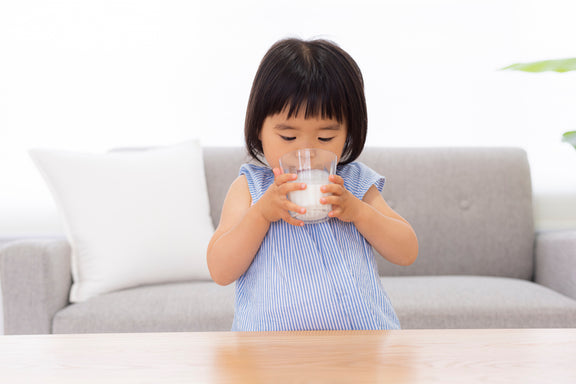
How Much Milk Should Your Toddler Drink?
How much milk should your toddler drink in a day? Find out the reco...
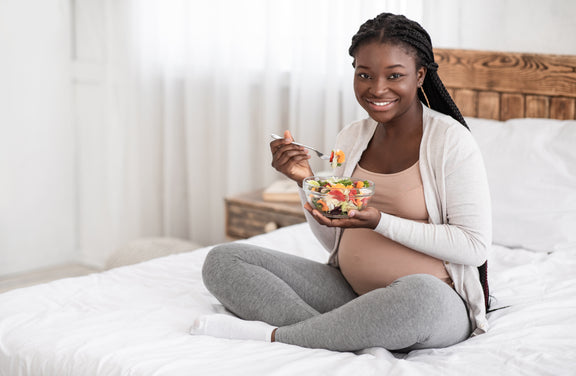
Pregnancy Nutrition: What to Eat In The Second Trimester
What to eat in the second trimester that will best nourish your bod...
All health-related content on this website is for informational purposes only and does not create a doctor-patient relationship. Always seek the advice of your own pediatrician in connection with any questions regarding your baby’s health.
These statements have not been evaluated by the Food and Drug Administration. Products are not intended to diagnose, treat, cure or prevent any disease. If your infant has severe eczema, check with your infant’s healthcare provider before feeding foods containing ground peanuts.






